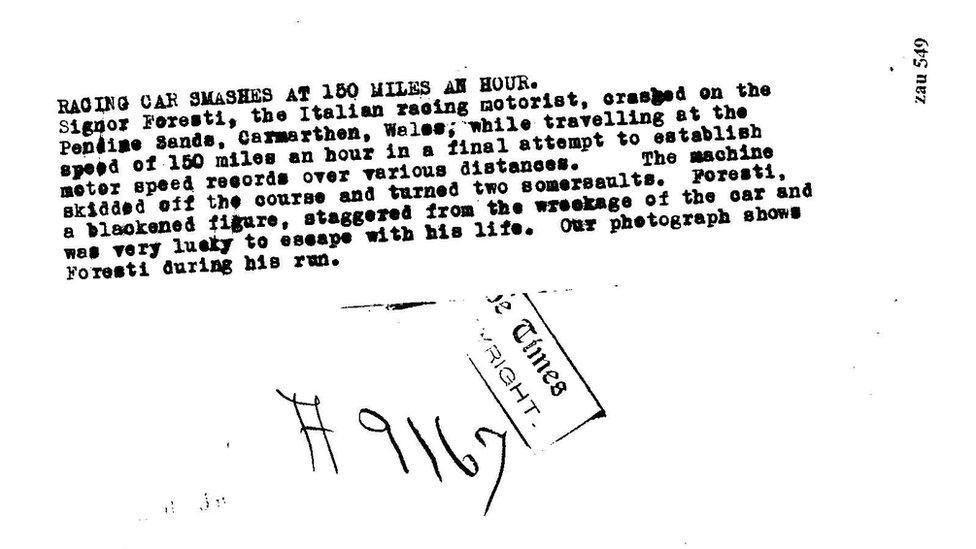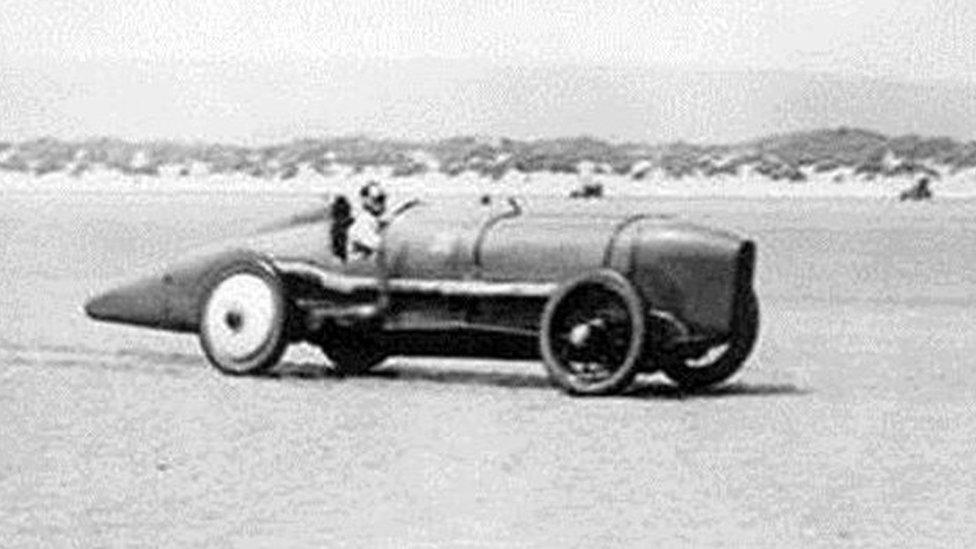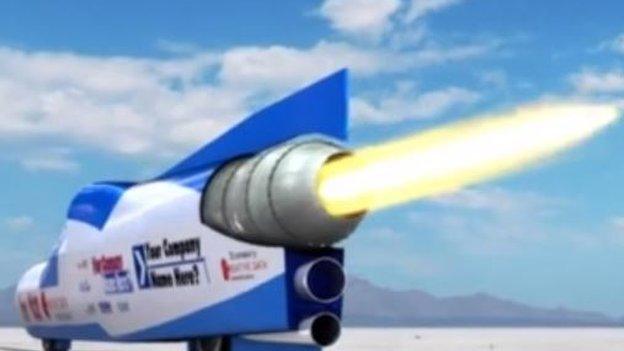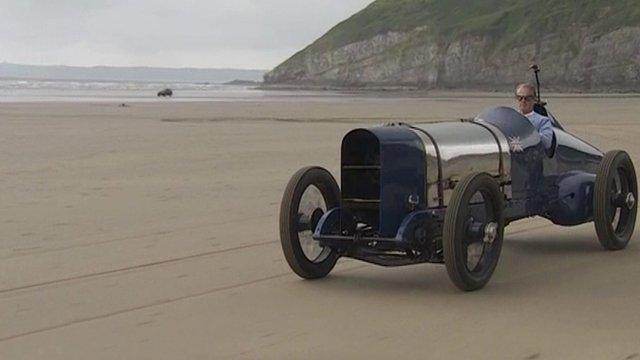Pendine Sands land-speed record attempt photo sold
- Published

The photo will be sold on Monday
A picture taken moments before a spectacular crash which ended a world land-speed record bid in Carmarthenshire has been sold.
It shows Italian driver Giulio Foresti on his Pendine Sands attempt.
It was taken on 26 November 1927 just before he lost control of his Djelmo Racer at 150mph (241km/h).
It sold for £45 to a Carmarthenshire County Museum volunteer, but the Antique and Flea Market returned the money.
The market's chairman Robert Pugh explained: "We decided as business to give the lady the money back and donate the picture to the [Pendine] Museum of Speed - she made the effort to come and buy it, that was the least we could do."
While the car cart-wheeled along the sand and was wrecked, Foresti was thrown clear and survived with just a cut to his head.

Describing the drama, a typed note that accompanies the press photograph reads: "The machine skidded off the course and turned two somersaults.
"Foresti, a blackened figure, staggered from the wreckage of the car and was very lucky to escape with his life."
It was the second serious accident during a world record attempt in less than a year, and highlighted Pendine's unsuitability as the speeds of vehicles increased.

Information from a newspaper accompanies the photograph
Mr Pugh said he picked up the press photo from a similar market a few years ago but now wants somebody else to enjoy it.
"I've been fascinated by the daring of the men who thundered up and down the beach in their extraordinary cars ever since I came across a letter from Malcolm Campbell, talking about his holiday in Tenby, and just slipping in that he'd be attempting the world land-speed record the following day," he said.
For the three years before Foresti's attempt, Campbell in his Bluebird cars was involved in a battle for the land speed record with Wrexham's John Godfrey Parry Thomas on Pendine Sands.
Between them they raised the record from 140mph (225kmh) to over 170mph (274kmh).
But tragedy struck on 3 March 1927, when Parry Thomas set out to beat Campbell's latest record of 175mph (281kmh) in his self-built 27 litre car he called Babs.
He appeared to be on track to set a new mark in his first run - two attempts from opposite directions were needed to set a world record.
But in the return run, Parry Thomas died when he crashed his aeroplane engine-powered vehicle.

The Blue Bird, which Malcolm Campbell drove on Pendine Sands
When Foresti suffered a similarly spectacular crash little more than half a year later, Mr Pugh said it spelled the death knell for Pendine record attempts.
He explained: "Even before Foresti set out for his attempt in the Djelmo car, everyone knew that time was almost up for Pendine."
Earlier that year, Henry Segrave had broken the 200mph (322kmh) barrier at Daytona Beach, Florida, in a 1000 HP, twin-engine car nicknamed The Slug.
"It meant that even if Foresti's car had been capable of breaking the record, at seven miles, Pendine simply wasn't long enough to safely accelerate and slow down from these new incredible speeds.
"But Pendine had already earned its place in the history books," Mr Pugh said.
While all future record attempts moved to Daytona, its 23 miles (37km) was deemed insufficient when speeds moved beyond 300mph (483kmh).
It was not quite the end of the story for Pendine Sands either.
In May, Malcolm Campbell's 88-year top speed on Pendine Sands was beaten by Idris Elba, star of BBC1 drama Luther.
Driving a Bentley Continental GT, he achieved an average speed of 180mph (290km/h).
- Published24 May 2015

- Published21 July 2015
